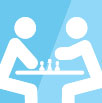
Governing Bodies
International Governing Bodies

Deaflympics
We are looking for people who would like to become Sport Ambassadors for this sport and help organize what and how we share information regarding this sport.


Ideally Sport Ambassadors have competed-in or particiapted in helping to organize sporting events in this sport. We are looking for people who know all the ins-and-outs and nitty gritty details about this sport, and most importantly have a passion for sharing the sport they love with others.
If you are the person who can help bring clarity to the big picture and all the way down to the fine details of this sport or know someone who you think should get involved. Let us know!


Together as a community we can help remove the obstacles and barriers of entry into our sports, and together we can create a voice loud enough to help make change for the better.
Get involved by filling out the form below and signing up to be a sport ambassador.

Organizations:
No Entries Found Suggest an Organization
Events:
No Entries Found Suggest an Event
